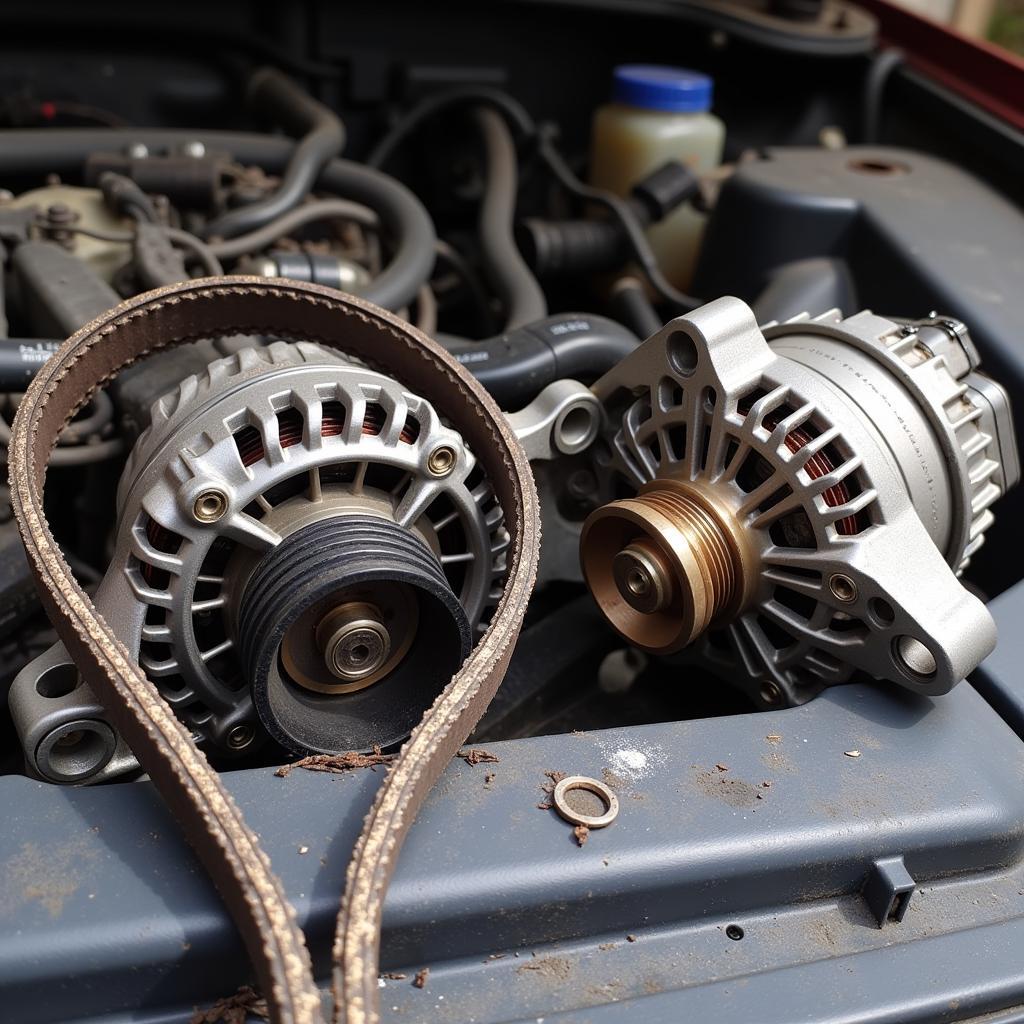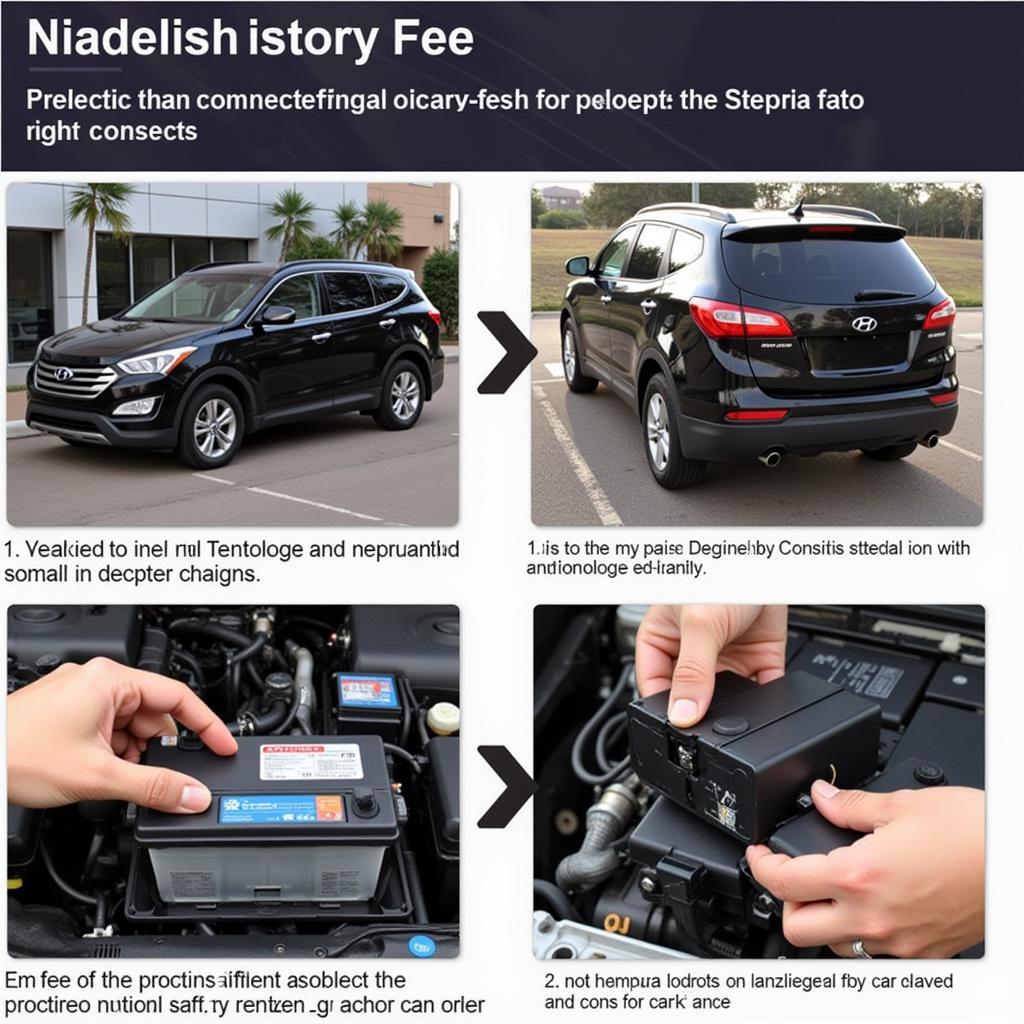Seeing both your battery light and check engine light illuminated on your dashboard can be alarming. This dual warning often signifies an underlying issue that requires attention. Understanding why these lights are on is crucial for preventing further damage and ensuring your vehicle’s safety and reliability. Let’s delve into the common causes and solutions for this concerning situation.
Understanding the Warning Lights
The battery light indicates a problem with the charging system. It doesn’t just mean a failing battery. The check engine light, on the other hand, can signal a wide array of issues, from minor sensor malfunctions to serious engine problems. When both lights are on simultaneously, it often suggests a connection between the charging system and the engine’s performance.
Why are Both Lights On?
One of the most frequent causes is a failing alternator. The alternator is responsible for charging the battery and powering the vehicle’s electrical systems while the engine is running. A malfunctioning alternator can’t adequately charge the battery, triggering the battery light. Additionally, a failing alternator can disrupt the engine’s performance, causing the check engine light to come on. If you recently replaced your car battery and now see the A3 brake warning light, it may point towards other electrical problems.
Another potential culprit is a loose or corroded battery cable. A poor connection can prevent the alternator from effectively charging the battery, resulting in both warning lights illuminating. Damaged or worn serpentine belts, which drive the alternator, can also cause similar issues.
 Failing Alternator and Serpentine Belt
Failing Alternator and Serpentine Belt
What Should You Do?
If you notice both the battery light and check engine light on, it’s essential to address the issue promptly. Continued driving with a faulty charging system can lead to a complete electrical failure, leaving you stranded.
-
Check the battery connections: Inspect the battery terminals and cables for any signs of corrosion or looseness. Clean the terminals with a wire brush and tighten the connections.
-
Inspect the serpentine belt: Look for any cracks, fraying, or looseness in the belt. If the belt appears damaged, it needs to be replaced.
-
Have the charging system tested: If the problem persists, take your vehicle to a qualified mechanic to have the charging system tested. This includes checking the alternator, battery, and voltage regulator. Consider a remote diagnostic service like the one we offer, to identify problems efficiently. We’ve successfully addressed issues ranging from a Subaru brake warning light stay on to complex electrical problems.
Don’t ignore these warning signs. Early detection and repair can prevent more significant and costly problems down the road. For instance, we helped a client diagnose their Chrysler 200 brake warning light remotely, saving them time and money.
FAQ
- Can I drive with both the battery and check engine light on? It’s not recommended. Continued driving could lead to a complete electrical system failure.
- Is it always the alternator when both lights are on? While a failing alternator is a common cause, other issues like corroded battery cables or a faulty voltage regulator can also trigger both lights.
- How much does it cost to replace an alternator? The cost varies depending on the vehicle make and model.
- What if the lights are flickering? Flickering lights could indicate a loose connection or a more intermittent problem with the charging system.
- Can I test the alternator myself? While some DIY tests exist, it’s best to have a qualified mechanic perform a proper diagnostic test.
- What if the lights come back on after replacing the alternator? This suggests another underlying problem that may not have been addressed. If your 2006 Silverado service brake system warning is also on, this signals a separate issue within the braking system.
- How can remote diagnostics help? Remote diagnostics can quickly pinpoint the issue, potentially avoiding unnecessary trips to the mechanic. For example, it could quickly identify the cause of a brake system warning light on a Honda Pilot.
Conclusion
Seeing both the battery light and check engine light on your dashboard warrants immediate attention. While a failing alternator is a common cause, various other factors could contribute to this dual warning. Don’t hesitate to seek professional assistance for proper diagnosis and repair to prevent further damage and ensure your vehicle’s safe and reliable operation.

